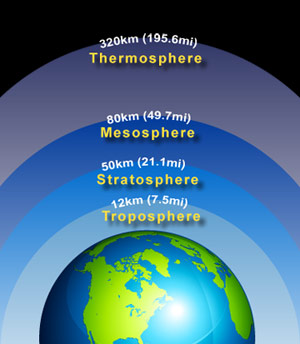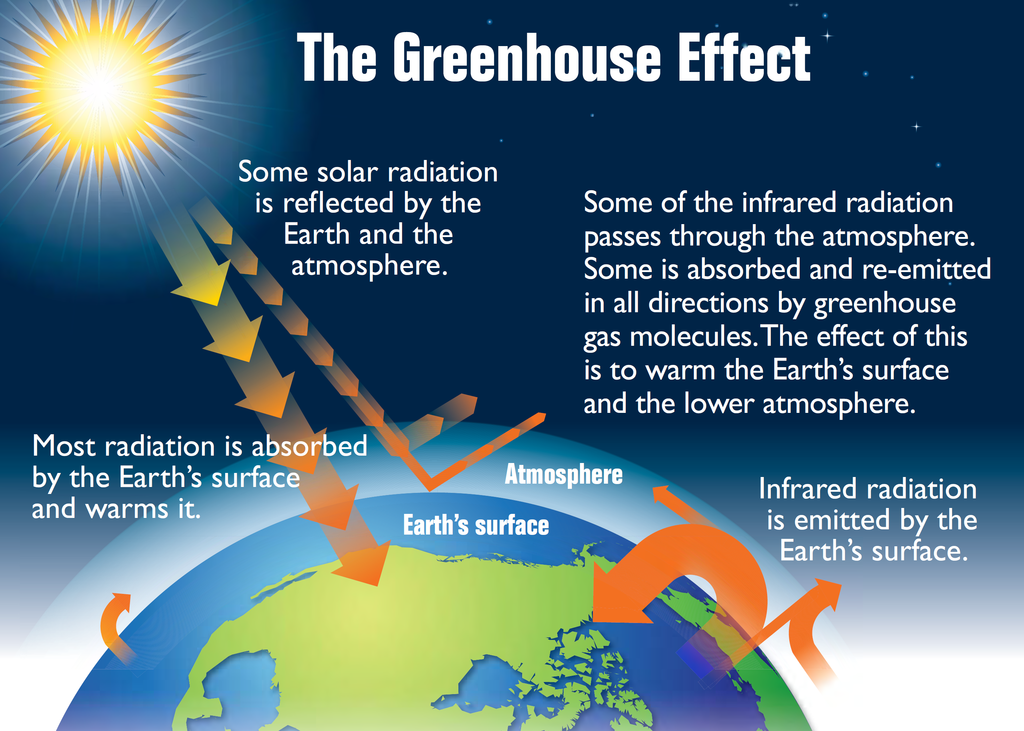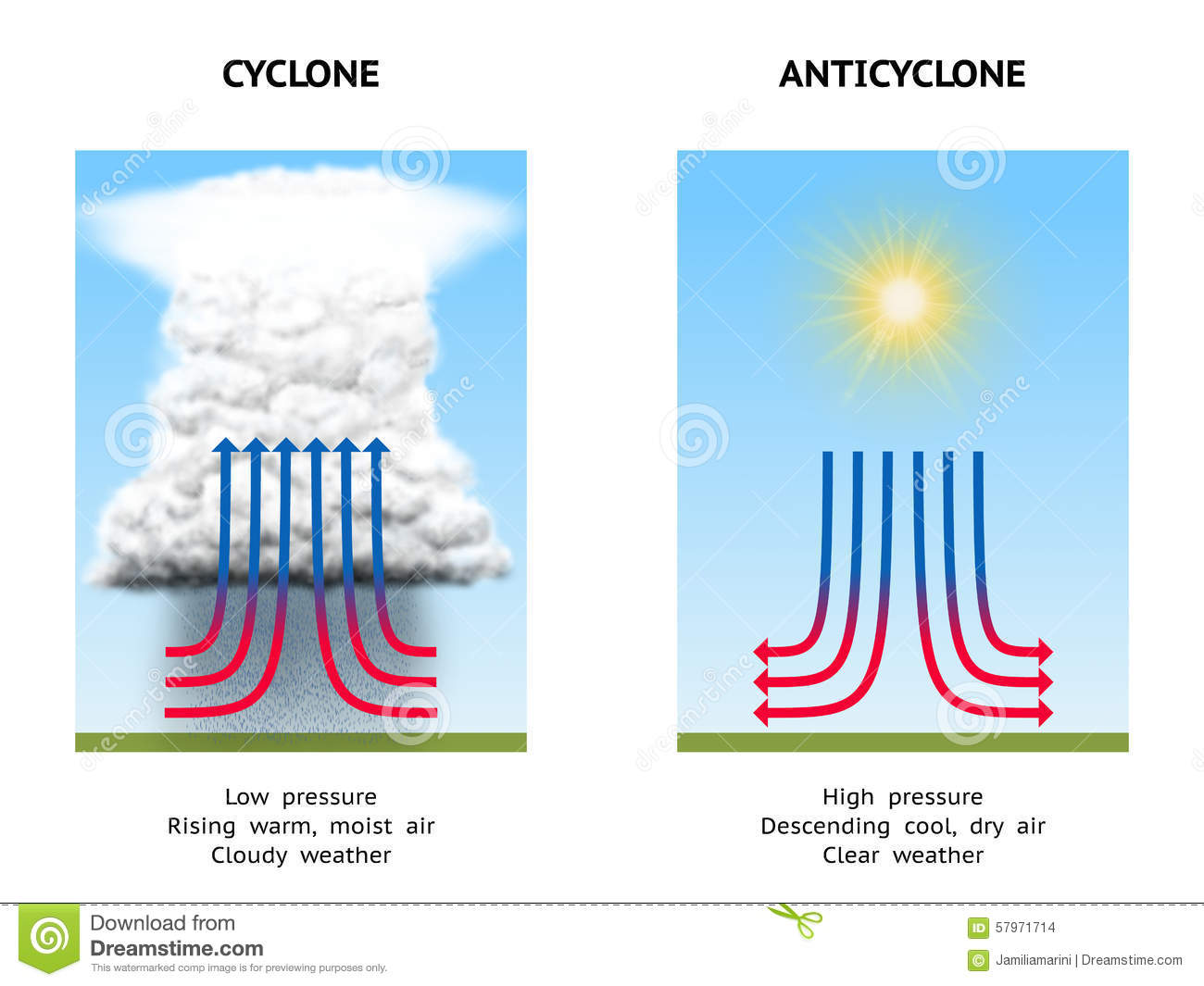State the composition and structure of the atmosphere.
The atmosphere is an envelope of air between the Earth’s surface and space. These gasses dictate how the Earths atmosphere behaves. This envelope of air is made up of:
78% Nitrogen
21% Oxygen
1% comprising of Argon, Hydrogen, Ozone and Carbon Dioxide.
The atmosphere is divided into layers extending from the Earth’s surface. The first layer is the Troposphere – in which most of the air is concentrated, and and generally contains most of the weather which affects us as pilots. The Troposphere extends 30,000ft over the poles and 60,000ft over the equator. This is capped off by the Tropopause.
The second layer is the Stratosphere, extending from the Tropopause to the Stratopause; which generally extends to 150,000ft from the Earth’s surface.
This layer generally contains little to no air or moisture, meaning it is not common for cloud to form in the stratosphere.

Describe the presence and importance of the following in the atmosphere:
a) carbon dioxide
b) ozone
c) water vapour.
All three gases are present in our atmosphere, and all three affect and change the atmospheric conditions and how our aircraft performs.
Carbon dioxide and other similar ‘waste gasses’ have the ability to trap heat; with excess amounts of these waste gases the ‘greenhouse effect’ takes place and the atmosphere is warmed.

Ozone is an important gas which filters out and blocks much of the harmful ultraviolet radiation from the sun reaching the Earths surface.
Water vapour is present in variable amounts depending on the temperature of the air; the warmer the air, the more water vapour it can hold. Generally, when air cools some of the vapour turns to liquid water or ice and clouds.
Explain the importance of correct subscale setting.
If a depression is moving overhead, the altimeter needle will read at a higher altitude even though the aircraft has not moved and the subscale setting has not been altered
The reverse works just as well
ie – the subscale knob function is to allow the correct QNH to be set in the subscale window so the altimeter can read correctly with reference to sea level on any given day.
Explain why an altimeter requires a subscale adjustment.
Altimeters in aircraft contain one or more aneroid capsules which expand as pressure around the aircraft reduces and contracts as the pressure increases or decreases.
As the ambient pressure changes every day, there is a need to adjust the strength or setting of the leaf spring, so that when sea level pressure does changes the altimeter can be adjusted so it continues to read correctly.
Define:
a) QNH;
b) QFE;
c) altitude;
d) height;
e) pressure altitude.
QNH stands for the atmospheric Pressure at Mean Sea Level.
A common mnemonic for QNH is “Nautical Height” or “Nil Height”
Or QNH as “Query Newlyn Harbour”. Newlyn Harbour in Cornwall, UK is home to the National Tidal and Sea Level Facility which is a reference for mean sea level.
QFE stands for Atmospheric Pressure at Field Elevation “Query Field Elevation” or “Fixed Elevation”
Aviation altitude is measured using Mean Sea Level (MSL) which gives us a height above mean sea level, or altitude.
Height is normally measured above the Ground. It is our altitude taken above a fixed datum (normally the elevation of the surrounding terrain)
Pressure Altitude is the air pressure in terms of altitude in the International Standard Atmosphere
or elevation above a standard datum with the air-pressure of 1013 hPa; also called QNE
Explain how deviation from ISA values influences performance of aircraft and their engines.
When conditions do not meet ISA (which they rarely do) the aircraft will perform differently.
For the ideal conditions for max performance of the aircraft and engines, we want a high pressure coupled with a low temperature.
The lower the temperature and the higher the pressure, the better the performance.
List the assumed conditions on which the International Standard Atmosphere (ISA) is based.
The International Standard Atmosphere (ISA) is a set of atmospheric conditions which are used as a ‘yard stick’ to calculate aircraft performance given these conditions. The conditions are rarely the same as ISA on any given day, but calculations can be made for changes.
ISA consists of the following conditions:
Sea level Pressure = 1013.2 hPa
Air Temperature = +15c at sea level
Temperature lapse rate = 1.98c/1,000ft
Temperature above 36,090 = Constant -56.5c
Pressure lapse rate = 1 hPa per 30 feet
State the unit of pressure commonly used in meteorology.
The unit used in aviation used to measure pressure is the pascal, commonly referred to as hectopascal (hundreds of pascals).
Hectopascals are written as hPa
State the concept of convergence and divergence and describe how the associated subsidence or ascent of air influences the type of weather commonly associated with pressure systems.
Horizontal inflow is the convergence of air; and divergence of air is outflow of air.
The convergence of horizontal winds causes air to rise, whereas the divergence of horizontal winds causes downward motion of the air (subsidence).

Explain the relationship between pressure gradient, isobars and wind velocity (airflow around pressure systems).
On weather charts the pressure gradient is indicated by the closeness of the isobars.
When they are close together they imply a greater difference in pressure over a small distance
The pressure gradient is strong and winds will be strong
When isobars are far apart they imply a small difference in pressure over a larger distance, the pressure gradient is slack and the winds will be light
Wind strength is directly proportional to the pressure gradient




